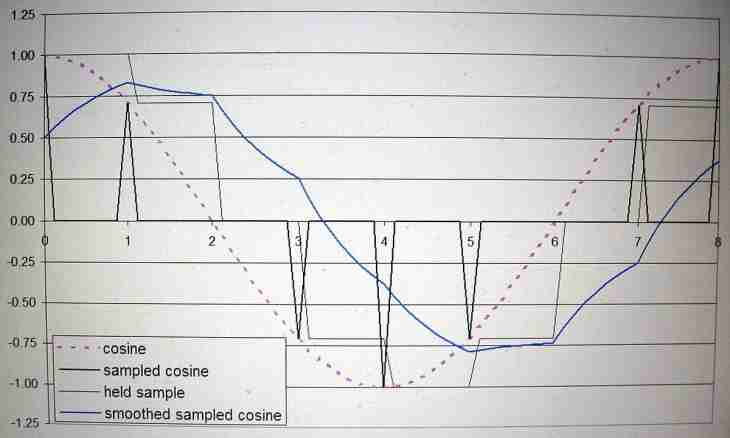Studying triangles is conducted by mathematicians throughout several millennia. The science about triangles - trigonometry - uses special sizes: sine and cosine.
Rectangular triangle
Initially the sine and a cosine arose because of need to count sizes in rectangular triangles. It was noticed that if not to change value of a-degree measure of corners in a rectangular triangle, then the ratio of the parties as far as these parties changed in length, remains always identical.
Quite so also concepts of a sine and a cosine were entered. The sine of an acute angle in a rectangular triangle is the relation of an opposite leg to a hypotenuse, and a cosine – adjacent to a hypotenuse.
Theorems of cosines and sine
But cosines and sine can be applied not only in rectangular triangles. To find value of an obtuse or acute angle, the party of any triangle, it is enough to apply the theorem of cosines and sine.
The theorem of cosines is quite simple: "The square of the party of a triangle is equal to the sum of squares of two other parties minus the doubled work of these parties on a cosine of the angle between them".
There are two interpretations of the theorem of sine: small and expanded. It agrees small: "In a triangle the corners are proportional to the opposite parties". This theorem is often expanded due to property of a circumscribed about a triangle circle: "In a triangle the corners are proportional to the opposite parties, and their relation is equal to diameter of a circumscribed circle".
Derivatives
Derivative - the mathematical tool showing how function concerning change of her argument quickly changes. Derivatives are used in algebra, geometry, economy and physics, a number of technical disciplines.
At the solution of tasks it is required to know tabular values of derivative trigonometrical functions: sine and cosine. A derivative of a sine is the cosine, and a cosine - a sine, but with the sign "minus".
Application in mathematics
Especially often sine and cosines are used at the solution of rectangular triangles and tasks, related.
The convenience of sine and cosines found the reflection and in the equipment. Corners and the parties were simple to be estimated according to theorems of cosines and sine, breaking difficult figures and objects into "simple" triangles. The engineers and architects who are often dealing with calculations of a ratio of the parties and-degree measures spent a lot of time and efforts for calculation of cosines and sine not of tabular corners.
Then Bradis's tables containing thousands of values of sine, cosines, tangents and cotangents of different corners lended a hand. In Soviet period some teachers forced the wards to learn pages of tables of Bradis by heart.
Radian — the angular size of an arch, on length equal to radius or 57.295779513 ° degrees.
Degree (in geometry) — the 1/360th part of a circle or the 1/90th part of a right angle.
π = 3.141592653589793238462 … (approximate value of number of Pi).
The table of cosines for corners: 0 °, 30 °, 45 °, 60 °, 90 °, 120 °, 135 °, 150 °, 180 °, 210 °, 225 °, 240 °, 270 °, 300 °, 315 °, 330 °, 360 °.
Corner x (in degrees) |
0 ° |
30 ° |
45 ° |
60 ° |
90 ° |
120 ° |
135 ° |
150 ° |
180 ° |
210 ° |
225 ° |
240 ° |
270 ° |
300 ° |
315 ° |
330 ° |
360 ° |
Corner x (in radians) |
0 |
π/6 |
π/4 |
π/3 |
π/2 |
2 x π/3 |
3 x π/4 |
5 x π/6 |
π |
7 x π/6 |
5 x π/4 |
4 x π/3 |
3 x π/2 |
5 x π/3 |
7 x π/4 |
11 x π/6 |
2 x π |
cos x |
1 |
√3/2 (0.8660) |
√2/2 (0.7071) |
1/2 (0.5) |
0 |
- 1/2 (-0.5) |
- √2/2 (-0.7071) |
- √3/2 (-0.8660) |
- 1 |
- √3/2 (-0.8660) |
- √2/2 (-0.7071) |
- 1/2 (-0.5) |
0 |
1/2 (0.5) |
√2/2 (0.7071) |
√3/2 (0.8660) |
1 |

